Working with tract builders
Regrettably it looks like I may have to pull the trigger on a new tract built home.
The dwelling will be your typical townhouse with a drive under garage and a rear two-story cantilevered section.
As I was saying, I really do not like tract builders because they can’t control their subs but due to high land costs they’re the only game in town unless one wants to spend over $750k for a custom home.
From my own experience with this design of home there are two what I consider typical failures.
#1 Inadequate insulation under the cantilevered section. Builders spec batt insulation for the open web floor trusses and it’s always jammed in there haphazardly leaving large gaps.
#2 Inadequate insulation/air ceiling in the drive under garage. Same situation with the cantilevered section. Batt insulation jammed into the open web trusses of the garage ceiling and no real air sealing of the garage walls that are shared with the interior space. Typically the floor above the garage is always really cold in the winter or warm in the summer.
Q: Has anyone had success getting a tract builder to install a layer of rigid foam in these areas?
My other issue will be the HVAC system as I know it’s going to be jammed in a closet in the garage, but there’s absolutely nothing I can do about that.
GBA Detail Library
A collection of one thousand construction details organized by climate and house part



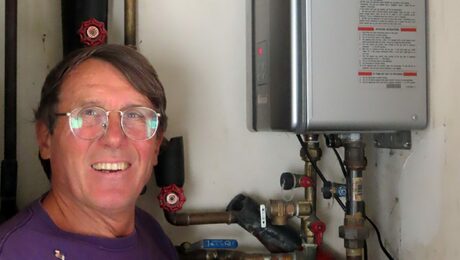
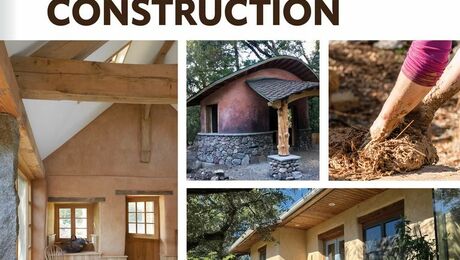
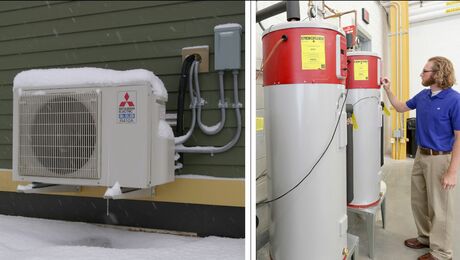
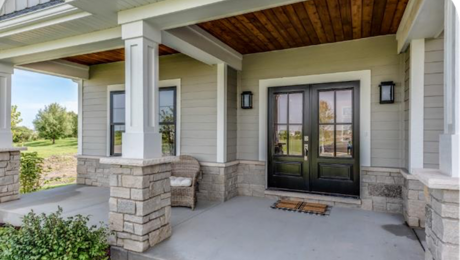
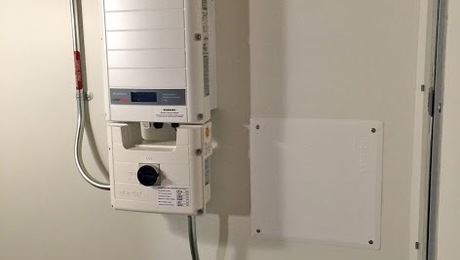

Replies
John,
Here's a link to an article on insulating cantilevered floors (and floors above garages):
How to Insulate a Cold Floor.
If there is "absolutely nothing you can do about" the fact that "the HVAC system is going to be jammed in a closed in the garage," you should budget a few thousand dollars and a month of work to retrofit the situation before you move in. Installing HVAC equipment in a garage closet is dangerous. It can introduce dangerous fumes indoors.
-- Martin Holladay
Ya, thanks Martin.
I'll have to think about this. Perhaps I can get the use of rigid foam and a reference to Manual S,J,T etc. written into the contract.
I wonder if you could get it built with not HVAC and get a discount for that and then install it later with your own HVAC contractor. That only makes sense with ductless.
What climate are you in?
If you are getting financing, you will need a certificate of occupancy to close, and to get a certificate of occupancy, the systems will need to be installed and functioning.
Your best bet in this scenario is to make sure your contract gives you inspection rights. Many contracts do NOT give you that right. Further the contract should require the builder to install everything in accordance with the code and mfg recommended installation guidelines. Many contracts only hold the builder to the standard of care prevalent in the area, which if often insufficient.
You should also plan to do alot of the simple, but tedious work yourself, such as added air sealing, adjusting the insulation, etc.
When you write the contract, you may decide to specifically request spray foam insulation for the cantilevered section. That would increase the chances of it being properly sealed.
In regards to the HVAC system, the ductwork will be the biggest issue. Learn all you can, and insist upon an inspection prior to drywall. Hire a third party to inspect and write a report, and require the contractor to make any needed corrections. You won't get a perfect system, but you will probably get one that is significantly better than the neighbors.
Charlie: I'm in Zone 3 (Atlanta). It's cold enough that a heating system is required in order to obtain a Cert of Occupancy.
CL: Ya. I figured I would have to do some on my own. Our existing code (IECC 2009) entails some air sealing requirements. I was looking at the builder (Ashton Woods) website last night and their pitch appears to take "right sizing" and "ventilation" into consideration so perhaps they'll require better work from their HVAC contractor. I live in flex duct country, but I was thinking about asking for rigid duct whenever a turn is required, and of course your suggestions fit the bill.
In all I'm probably giving up the following: Balance ventilation for supply-only. Exterior rigid foam and 2x6 framing for a ton of 2x4's with a lot of thermal bridges. Grade 1 insulation for grade 2-3.
We're still in the very early stages. I just wanted some ideas before we get a head of ourselves. Of course I fully expect the builder reps not to have all the information they need and buyers who are none the wiser will still snap up the preferred lots as soon as they can.
Thx.
John,
If you want to hire a consultant to work with the builder on your project, there are two GBA-affiliated consultants in the Atlanta area whom you might want to contact. I have no idea whether their schedules might accommodate your needs, but here are their names and email addresses:
Allison Bailes
[email protected]
Carl Seville
[email protected]
-- Martin Holladay
I've known tract building doing foam insulation, but then stopped. I guess they got bitten.
The keyword you want is energy star, mention that with your builder.
Martin: Thanks for the tip. I've found some insightful information on Allison's website.
N/A N/A: Thanks for the input. First demand is so high in my market area that builders basically set the terms. Secondly this is a townhome, so a tract builder will not in any way add exterior foam (I'd prefer R3-R6 ZIP-R). They would probably double or triple the price which is what many builders do when asked to do something outside the norm and/or that they don't want to do. High demand affords them the luxury of letting customers with above average demands walk.. Buying a tract built home is akin to ordering an automobile. You get to pick the model, the options and color but you don't get to make design changes.
Ah townhome, yeah there's nothing you can do there.
If it's a single family home, try to find the more rural tract builders that builds on your own lot. Best of both worlds.
N/A N/A: I hear you, but quality of life would suffer because our commutes would exceed 1 hour both directions on a good day.
I'm in a similar situation - the builder will build the shell up to dry-in, then it's mine.
If you can get a couple of days here and there during construction, here's one way to get better wall insulation w/o ext foam: http://www.finehomebuilding.com/2014/11/26/breaking-the-thermal-bridge. Just pay very close attention to how 2" less in the kitchen and bathrooms will work.
You could see if your contractor will credit you (or give you a freebie) for the batt insulation if you blow in cellulose or AttiCat (from HD).
Air seal whatever you can.
.02
@Mark,
Thanks for the suggestion. Thankfully I've convinced the wife to remain in our drafty but inexpensive townhome. I'm expecting to be served with divorce papers at any moment. :)
Over the course of a couple of years one of the guys in my office managed to retrofit air seal, and retrofit insulate his extremely poorly detailed 1980s vintage townhouse to good effect, with noticeable improvements in comfort & energy use.
It included installing foam-board air dams and properly insulating the offending cantilevered sections, and eventually replacing decrepit leaky 30 year old windows with something decent, but it's no longer in the "drafty" category by any means. I don't think he has anywhere near 500 hours of DIY effort into it- probably on the order of 100 hours (cood B rong, offen am.)